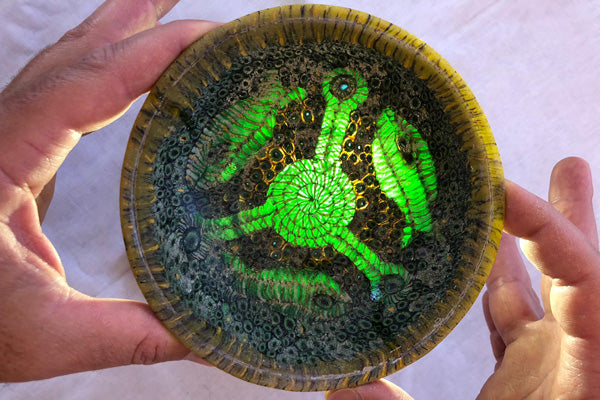Alexander the Great and the Macedonian Empire
356 BC (Pella) - 323 BC (Babylon/Alexandria)
Why is treasure hunting in countries like Greece, Turkey, Syria, Lebanon, Israel, Egypt, Jordan, Iraq, Iran, Afghanistan, Pakistan and India that interesting and successful as many sources prove?
A good research should always precede a treasure hunt, in order to know what can be detected where, and in what depth. A very interesting topic is Alexander III. of Macedonia, who went down in history as one of the most important commanders and is also called Alexander the Great since his death. In his 12 years reign, he created a powerful world empire. The fusion of the Greek and the Oriental cultural heritage ushered the Hellenistic era, the spread of the Greek culture, which strongly affected the Occident and the Orient for the subsequent 300 years.

(Public Domain/Wikimedia Commons)
2350 years ago, when Alexander III. of Macedonia was 21 years old, he started his 10 years lasting conquering expedition (known as Alexanders campaign) against Persia and great king Dareios III Kodomannos. By order of the League of Corinth and in accordance to the contract, Alexander III. started the revenge of the Greeks against the Persian empire "panhellenic revenge" in 334 BC. The reason and at the same time legitimation was the revenge for the destruction of Athens by the Persians in 480 BC and the liberation of the Asia Minor coast from the Persian rule.
With the sieges of Miletus, Halicarnassos and Tyros, the peaceful takeovers and battles of Granikos, Issos, Gaugamela, the Persian gates, the Jaxartes, the Sogdian rock (also called rock of Ariamazes), the rocks of the Sisimithres, Gabai and at the Hydaspes, the Alexander empire was extended till the Indian subcontinent.
At the beginning of the Alexanders campaign his 35000 men strong army covered a distance of more than 18000 kilometers through the countries of Macedonia, Thrace (today's Greece), Asia Minor (today's Turkey, Syria, Lebanon and Israel) to Egypt and from there over Mesopotamia and Persia (today's Jordan, Iraq, Iran, Afghanistan and Pakistan) to the border of Maurya (today's India) and from there back to its capital Susa. During this campaign, Alexander III. founded almost 40 cities, some of which are still important today, like Alexandria in Egypt or Herat, Kabul and Kandahar in Afghanistan. At that time his power was maintained by left-behind crew members and the settlement of troops.

(Public Domain/Wikimedia Commons)
Wherever occupations or battles took place, many people were forced to leave their homes in short time. The only hope to hide their personal valuables from the approaching conquerors was burying them in the ground.
Also in places where cities and settlements where destroyed by pillages and despoliation in ancient times, people find interesting relics of those periods. So it is no surprise that so many people tell about their treasure finds with modern 3D ground scanners they used to locate valuable objects at great depths.
Today, the great historical sites are extensively explored, but along the Alexander campaign there are still a lot of buried, lost objects waiting to be discovered with the modern technology of the Gepard GPR, the various geophysical instruments such as the Evolution NTX, the Rover Series and, above all, the Earth Imager models of the eXp Series. The main difference of those units is their comfort. The common function is the location of buried artefacts, lost treasures, underground anomalies and other subsurface structures. All OKM 3D ground scanner support a nondestructive investigation of the ground by graphical representations and analysis of buried objects without any excavation. After the result evaluation, the recovery of the detected objects can be carried out efficiently.
Further successful finds are closely related to "Alexander the Great" and the vast "Alexander empire" he created (today, among others, Greece, Turkey, Iraq, Iran, Afghanistan).


